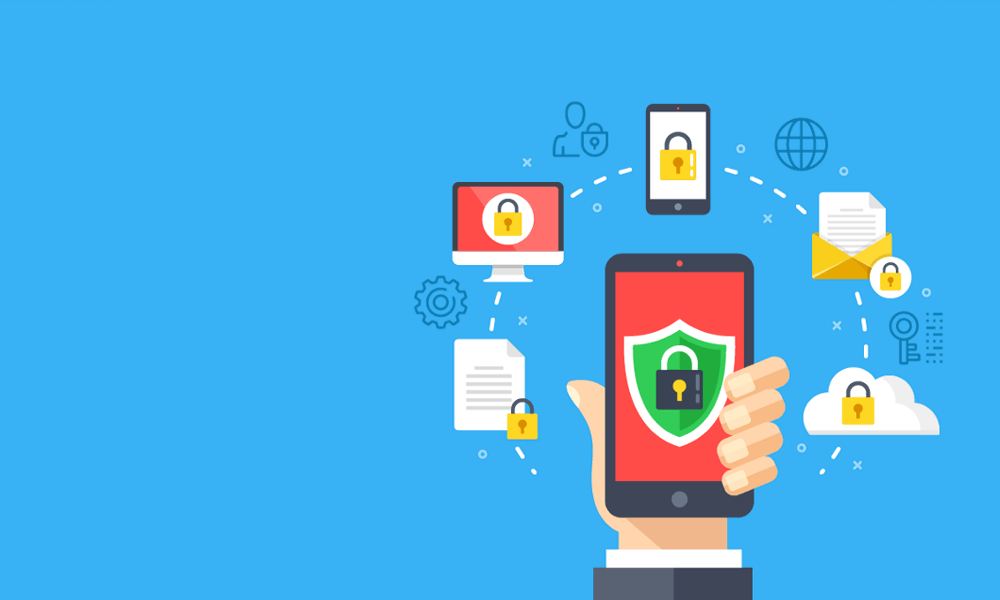When data is becoming a commodity, there isn't a day that is free from data breaches or vulnerabilities.
This is where privacy becomes something that people must know how to take care of. In the age of internet where almost any data can be shared, people's personal data is always at risk.
No product is perfect. And so is human. The best apps and the most knowledgeable and careful humans have flaws. But knowing how to secure your data, you should at least have some advantage by making things difficult for others to peak into your information they don't have have the rights.
Since the many daily activities we do can be done on mobile, it's easy to say that insecure apps are a product of bad design. But the fact is that, both the app, the user, and anyone in between are the flaws. To lower the marginal defect, all parties involved should understand the preventive measures, as well as general knowledge on information security on the internet.

The responsibility for securing information falls into three different parties: developers, implementers, and users of the application.
Developers are responsible for building and maintaining secure software; implementers are required to validate those apps to make sure that they have proper security, the protective standards needed and able to work as intended; and users that are responsible in protecting their own data by choosing the apps they need and use them wisely.
Here, the three need to live up to their responsibilities.
Developers
The creators of apps, and sources of the original idea. What they do is make something that helps users, answering their demands in the market.
- Security as priority. Developers need to understand the threats, and improvise their strategies and methods to mitigate any incoming and potential attacks. They should design a threat model right from the start, in order to implement security measures from the beginning.
- Put secrets away from codes. From API tokens, transport layer security (TLS) keys, passwords or other sensitive information, should never be hardcoded in plain text within the app's configuration files or source code. Use multifactor authentication method and single sign-in authentication, encrypt all sensitive data, and implement the lest-privilege permissions to prevent anyone in getting easy access to the system.
- Security as user experience. Developers need to integrate their app's security measures into part of user experience. Integrating this measures should be concise with proper planning.

Implementers
Between developers and users, it's the implementer. What they do, is planning, educating, organizing, purchasing, and creating the workflow for apps in the ecosystem.
- Understand the ecosystem. Cybersecurity is complex and multifaceted. A flaw in security may or may not originated from one app, but occur when more than one app work in combination.
- Testing. Never rely on statements made by others. An app can be secured if it's implemented securely, so always perform hack tests on each versions of apps available.
- Monitoring. Continuously monitor apps for potential attacks and misuses. Also, performance monitoring is necessary to know how apps behave and to know whether they have been compromised or gone rogue.
- Use security features. From proper encryption to easy to opt-out data, and features like multifactor authentication.
Users
Developers and implementers may have done their best in securing the software and their platform. But still, it all depends on the end users. Security-unaware, negligent and careless users can ruin everything. On the other hand, users that know how to protect themselves from privacy breach, can patch security holes left unknown by developers and implementers.
- Protect data on and off the platform. Security breach usually happen on the platform. But in many circumstances, breach can also happen outside the app. Many accounts have been breached by users falling to fishing scams, for example. Here, users need to regularly review their privacy settings and use whatever security features provided by the developer.
- Create strong passwords and manage them carefully. This includes avoiding password resuse. Try to change password frequently, and use password manager to manage the many user credentials they may have.
- Avoid unsecured connections. Never send important and personal data through networks that are public or not encrypted. Users may use virtual private networks (VPNs) when connecting to an open wireless network, for example.